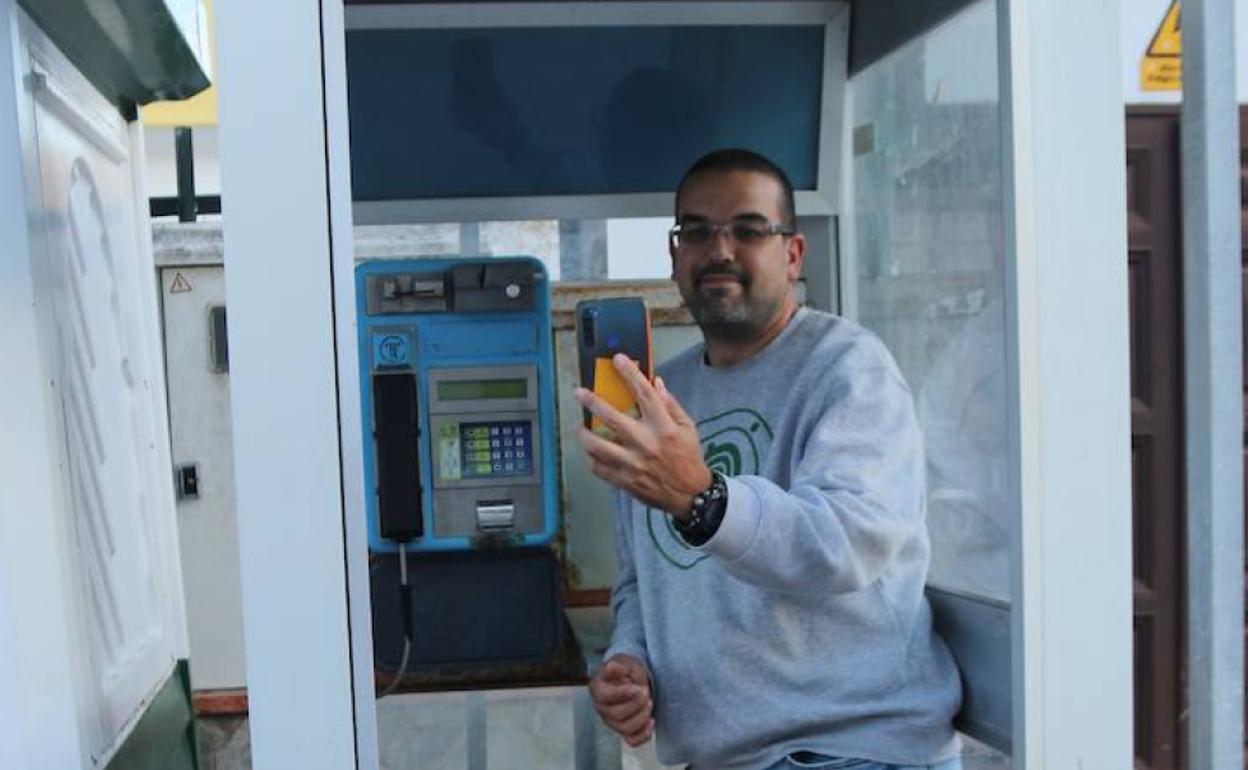Old phone boxes: icons or eyesores?
In Malaga province, some of the oldest booths are preserved as icons, but new legislation will do away with them in 2022
VANESSA MELGAR
Thursday, 23 December 2021, 17:00
To speak from a distance to relatives, friends or partners, we used to have to find some loose change, go out into the street, even queue, to go into a phone box, close the doors (in the older ones), insert the coins and dial the number. You had to remember it, or have written it down. Then, at the other end, if it was picked up, someone would say “Hello”, not knowing who was calling, because in those days there was nothing to indicate the identity of the caller. Then you would hold a conversation which was not exactly private, in that booth in the street with its glass sides, clearly in view of everyone passing by. That’s what going to make a phone call used to be like.
People who are already past their thirties will have done this at least once or twice in their lives, and those who are younger will think it sounds very strange. Phone boxes are retro features for all age groups now, but for the older among us there is an emotional component, a nostalgia for something which was part of everyday life and provided an essential service, until mobile phones came on the scene and gained in popularity, putting an end to the phone boxes. The first one had been installed in Spain in 1963 (although the first public pay phone was in Madrid in 1928), and by the end of that decade they were everywhere.
These days there are about 15,000 phone boxes in the country, run by Telefónica, and they are barely used, in fact some of them never are. They still exist because the regulations say there has to be one public pay phone plus one additional one for every 3,000 inhabitants in places which have a population of over 1,000. There is also supposed to be one phone of this type in villages which have fewer than 1,000 inhabitants, although in that case it has to be proved that one is needed.
Phone booths have been reprieved several times in the past, but now their end is nigh. This week, the government approved the project for a new General Telecommunications Law (LGT), which will probably come into force in the second half of 2022. It will no longer be necessary to provide phone boxes as a public service, and phone books will no longer exist either, as both of these facilities are now obsolete. It will mark the true end to these icons, it seems, after nearly a century or nearly 60 years, depending on whether you are counting from 1928 or 1963.
In Malaga province you can still find some of the oldest phone boxes, dating back to the the time when they were enclosed, especially in places with small populations. There are around 15 in the Serranía de Ronda. Most of them, in the tiniest villages, have had no phone line for some time and they are in a bad state of repair, having been vandalised or simply deteriorated with the passing of time.
Paradoxically, people tend to be surprised to come across these old-style facilities and often get their mobile phones out for a selfie with them, rather like they do with the traditional red phone boxes in the UK, where they are preserved by the government as a part of the country’s heritage.
Phone booths still exist in Cartajima, Montecorto, Jubrique, Igualeja, Jimera, Gaucín and Benarrabá, among other places. In Cortes de la Frontera there are four (including outlying areas) which still work, and Arriate also has one. In Genalguacil, as mayor Miguel Herrera explains, the council built the booth and the phone still works, because that is what the local authority wanted.
“It’s an icon”
In some places Telefónica removed phone boxes years ago at the request of the mayors, but in others they are fighting to keep them.
“I don’t want them to take our phone box away, because it’s an icon,” said Soraya García, the mayor of Benaoján. “I don’t want ours to go either, we want to turn it into a tourist information point, where people can obtain leaflets,” said her counterpart in Benarrabá, Silvestre Barroso.
“The one here was working until not long ago, because we asked to keep the line,” explained Francisco Javier Benítez, the mayor of Cartajima. Francisco Javier Lobo, his colleague in Jimera, said “They took ours away recently, although several of the elderly ladies in the village used to use it”. In other villages, the phone booths have been removed because they got in the way of building works.
In Malaga city and some towns, such as Ronda and Antequera, among others, some phone booths can still be found, although most of them are the more modern style. The majority are no longer in service, either because they don’t work, which is the case in Antequera, or just because nobody needs them any more.
